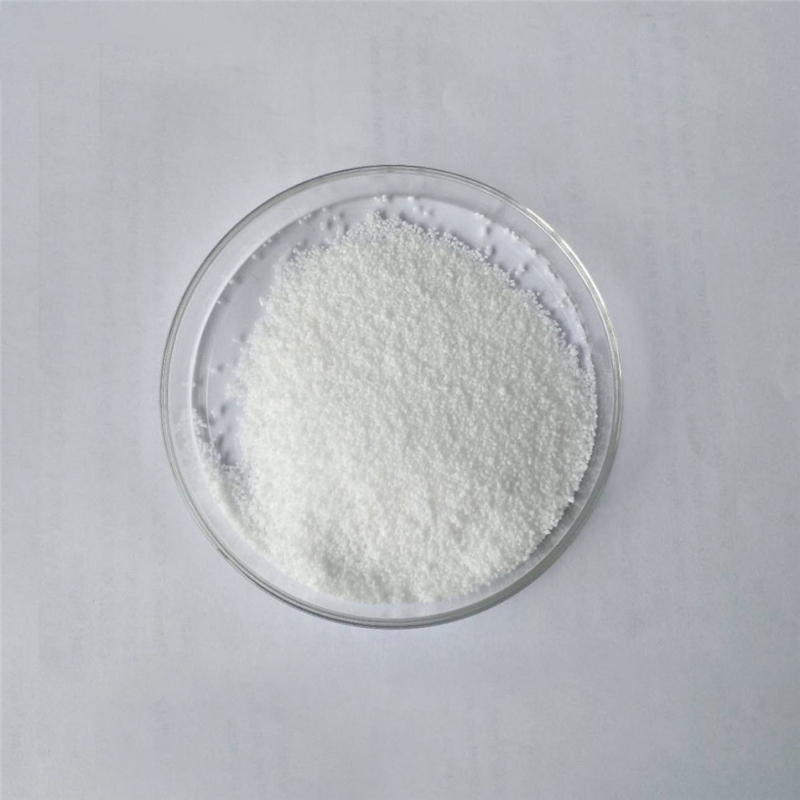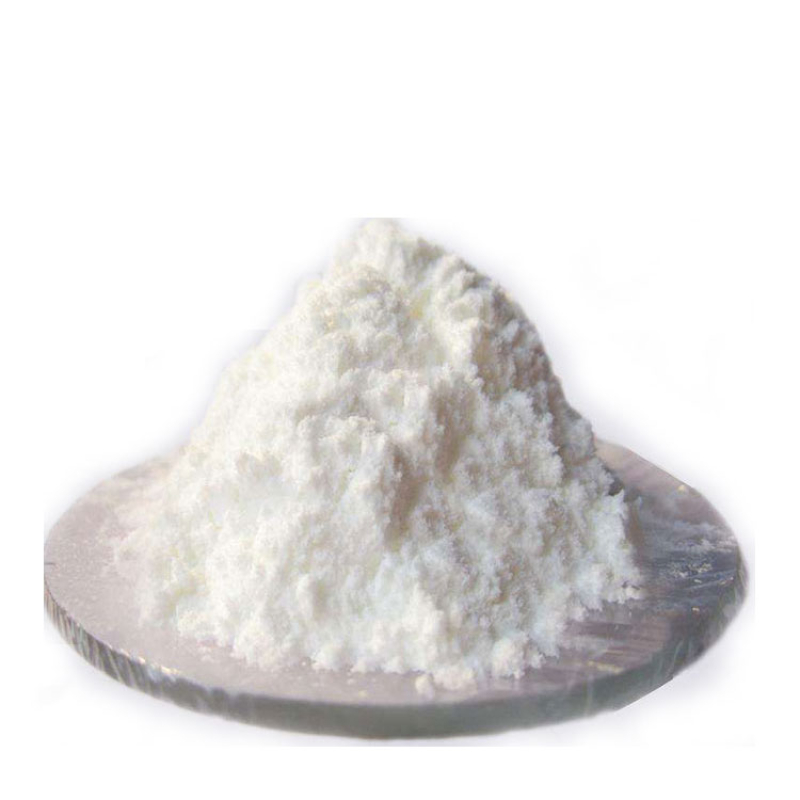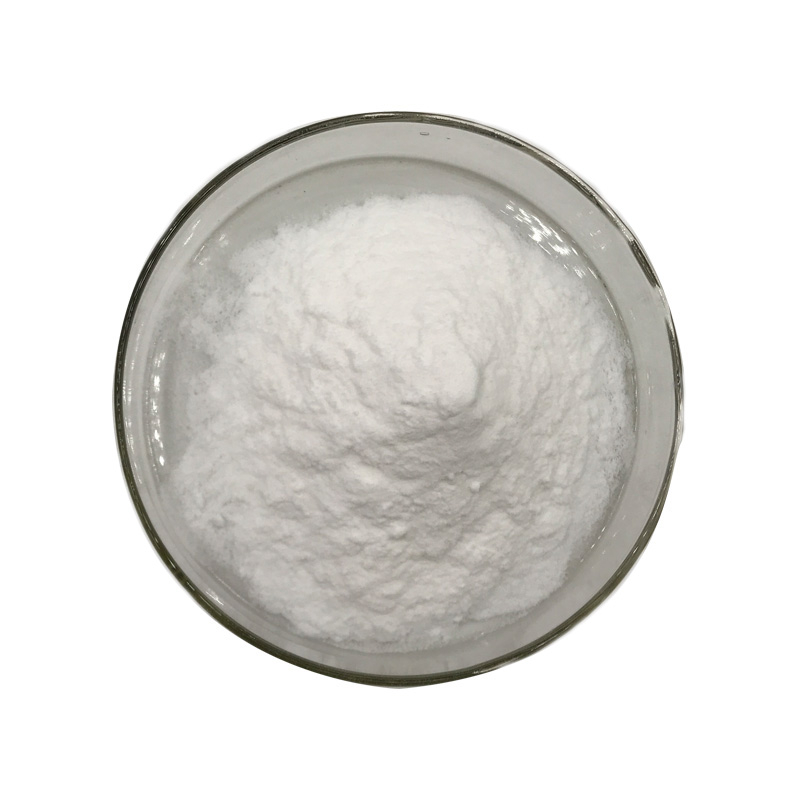Products Description of (TETRAHYDRO-2H-PYRAN-4-YL)METHANOL CAS#14774-37-9(Tetrahydro-2H-pyran-4-yl)methanol is a basic organic chemical raw material and high-quality fuel.(TETRAHYDRO-2H-PYRAN-4-YL)METHANOL Chemical PropertiesBoiling point 105 °Cdensity 1.000±0.06 g/cm3(Predicted)Fp 61°(142°F)refractive index 1.4600storage temp. Sealed in dry,Room Temperatureform clear liquidpka14.85±0.10(Predicted)color Colorless to Light yellow to Light orangeWater Solubility Slightly soluble in water.CAS DataBase Reference14774-37-9(CAS DataBase Reference)Safety I
Contact Now
O-(Tetrahydro-2H-pyran-2-yl)hydroxylamine CAS#6723-30-4O-(Tetrahydro-2H-pyran-2-yl)hydroxylamine Chemical PropertiesMelting point 34-37 °C (lit.)Boiling point 81 °C/20 mmHg (lit.)density 1.1274 (rough estimate)refractive index 1.4206 (estimate)Fp 180 °Fstorage temp. Keep in dark place,Inert atmosphere,Store in freezer, under -20°Csolubility DMSO (Slightly), Methanol (Slightly)pka3.28±0.20(Predicted)form Low Melting Solidcolor WhiteSafety InformationHazard Codes XiRisk Statements 36/37/38Safety Statements 26-36WGK Germany 3HS
Contact Now
Products Description of METHYL-(TETRAHYDRO-PYRAN-4-YL)-AMINE HCL CAS#220641-87-2N-Methyltetrahydro-2H-pyran-4-amine is a pharmaceutical intermediate, which can be prepared by reductive amination reaction of tetrahydro-4H-pyran-4-one and methylamine.METHYL-(TETRAHYDRO-PYRAN-4-YL)-AMINE HCL Chemical PropertiesBoiling point 165.0±33.0 °C(Predicted)density 0.93±0.1 g/cm3(Predicted)storage temp. under inert gas (nitrogen or Argon) at 2–8 °Cpka10.01±0.20(Predicted)form liquidcolor Clear, colourlessBoiling point 165.0±33.0 °C(Predicted)density 0.93±0.1 g/c
Contact Now
Products Description of Tetrahydro-4H-pyran-4-one CAS#29943-42-8Tetrahydropyranone, also known as tetrahydropyran-4-one, is a chemical substance with the molecular formula C5H8O2.Tetrahydro-4H-pyran-4-one Chemical PropertiesBoiling point 166-166.5 °C (lit.)density 1.084 g/mL at 25 °C (lit.)refractive index n20/D 1.452(lit.)Fp 134 °Fstorage temp. Inert atmosphere,Room Temperatureform Liquidcolor Clear colorless to pale yellowWater Solubility MISCIBLEBRN 106463InChIKeyJMJRYTGVHCAYCT-UHFFFAOYSA-NCAS DataBase Reference29943-42-8(CAS
Contact Now
Products Description of 3,4-Dihydro-2H-pyran CAS#110-87-23,4-Dihydro-2H-pyran, referred to as DHP, is an organic intermediate often used as a protective group.
Contact Now
Products Description of Tetrahydro-4-pyranol CAS#2081-44-9Tetrahydropyran-4-ol is a colorless transparent liquid at room temperature and pressure. It has good polarity and hydrophilicity and can be used as a solvent in organic synthesis. The structure of tetrahydropyran-4-ol contains a tetrahydropyran unit and an active hydroxyl structure, and has high chemical reactivity and diverse chemical conversion properties. The tetrahydropyran-4-ol molecule contains a hydroxyl structure, so it has a certain polarity.
Contact Now
Products Description of 1H,1H,2H,2H-Perfluorodecyltriethoxysilane CAS#101947-16-4Organosilicon compounds and organosilicon materials made from them are of many varieties and excellent in performance. They have been widely used in industrial and agricultural production, emerging technologies, national defense and military industries, etc. The hydrosilylation reaction is one of the most important methods for generating Si-C bonds in organosilicon chemistry.
Contact Now
Products Description of 4,5-Dichloro-3(2H)-pyridazinone CAS#932-22-94,5-Dichloropyridazin-3(2H)-one is an organic intermediate that can be used to prepare thiadiazole compounds 4-chloro-2-[(5-ethoxy-1,3,4-thiadiazole-2-)methyl]-5-piperidinyl-3(2H)-pyridazinone.
Contact Now
Products Description of 6-Methylpyridazin-3(2H)-One CAS#13327-27-06-Methyl-3(2H)-pyridazinone is a yellow crystalline powder with a melting point of 138°C.
Contact Now
Products Description of 1,2-Benzisothiazol-3(2H)-oneCAS#2634-33-51,2-Benzisothiazol-3-one (BIT for short) is a major industrial bactericidal, preservative and enzyme inhibitor. It has an outstanding inhibitory effect on the growth of mold, algae and other microorganisms in organic media. It can solve a series of problems such as mold, fermentation, deterioration, demulsification and odor of organic products caused by microbial growth.
Contact Now
Products Description of Tetrahydrothiopyran-4-one CAS#1072-72-6Tetrahydrothiopyran-4-one (4H-Thiopyran-4-one,tetrahydro-), the molecular formula is C5H8OS.Tetrahydrothiopyran-4-one Chemical PropertiesMelting point 60-64 °C (lit.)Boiling point 140.82°C (estimate)density 1.050 (estimate)refractive index 1.5100 (estimate)storage temp. Inert atmosphere,Room Temperaturesolubility Acetonitrile (Slightly), Chloroform (Slightly)form Crystalline Solidcolor White to pale yellowBRN 106464InChIKeyOVRJVKCZJCNSOW-UHFFFAOYSA-NLogP0.490 (est)CAS DataBase Refer
Contact Now
6-CHLORO-9-(TETRAHYDRO-2-PYRANYL)-PURINE Chemical PropertiesMelting point 149-151℃Boiling point 428.3±55.0 °C(Predicted)density 1.604Fp 213°(415°F)refractive index 1.7410storage temp. Inert atmosphere,Store in freezer, under -20°Cpka0.79±0.10(Predicted)form Solidcolor White to pale yellowCAS DataBase Reference7306-68-5(CAS DataBase Reference)Safety InformationHS Code 2933998090Factory and Equipment ShowFast delivery timeInventory 2-3 working days New production 7-10 working days
Contact Now
Products Description of ZIRCONIUM(IV) HYDROGENPHOSPHATECAS#13772-29-7Zirconium phosphate (ZrP), also known as zirconium hydrogen phosphate, has a chemical formula of Zr(HPO₄)₂.2H₂O and is a fine phosphorus chemical product. Zirconium phosphate has a white powder appearance, an acidic pH value, stable chemical properties, is insoluble in water, insoluble in general organic solvents, has good acid and alkali resistance, has high thermal stability and mechanical strength, and is widely used as a solid lubricant in self-lubricating composite materials.
Contact Now
Calcium beta-hydroxy-beta-methylbutyrate Chemical PropertiesMelting point >215°C (dec.)storage temp. Inert atmosphere,Room Temperaturesolubility Water (Slightly)form Powdercolor WhiteWater Solubility Soluble in water.Stability:HygroscopicInChIInChI=1S/C5H10O3.Ca.2H/c1-5(2,8)3-4(6)7;;;/h8H,3H2,1-2H3,(H,6,7);;;InChIKeyWLJUMPWVUPNXMF-UHFFFAOYSA-LSMILESC(C(=O)O)C(O)(C)C.[Ca]CAS DataBase Reference135236-72-5(CAS DataBase Reference)Safety InformationHS Code 2920907090Product Application of Calcium beta-hydroxy-beta-methylbutyrate CAS#135236-72-5Used as phar
Contact Now
Products Description of Sodium Oleate CAS#143-19-1Sodium oleate, also known as sodium octadecenoate, cis-9-octadecenol, oleyl alcohol, cis-9-octadecenol, (Z)-octadecene-9-enol, olive oil alcohol, cis -9-Octadecen-1-ol, 9-n-octadecenol, octadecenol. It is an organic oil with the chemical formula C17H33CO2Na. Sodium acid acid is the main component of soaps made from olive oil and other soaps. It is also the main component of tallow soap. It can also be produced by the reaction of sodium hydroxide and oleic acid. It is a compound composed of hydrophobic and hydrophilic groups.
Contact Now
Products Description of Sodium Oleate CAS#143-19-1Sodium oleate, also known as sodium octadecenoate, cis-9-octadecenol, oleyl alcohol, cis-9-octadecenol, (Z)-octadecenol, olive oil alcohol, cis-9-octadecen-1-ol, 9-n-octadecenol, octadecenol. It is an organic oil with the chemical formula C17H33CO2Na. Sodium oleate is the main component of soap made from olive oil and tallow soap. It can also be made by reacting sodium hydroxide with oleic acid. It is a compound composed of a hydrophobic group and a hydrophilic group.
Contact Now
Dodecyltrimethylammonium Bromide Chemical PropertiesMelting point 246 °C (dec.)(lit.)density 1.1566 (rough estimate)vapor pressure 0Pa at 20℃refractive index 1.5260 (estimate)Fp 246°Cstorage temp. Store below +30°C.solubility H2O: 0.1 M at 20 °C, clear, colorlessform Powdercolor White to slightly yellowWater Solubility solubleSensitive Hygroscopicλmaxλ: 240 nm Amax: ≤0.2λ: 250 nm Amax: ≤0.03λ: 260 nm Amax: ≤0.02λ: 500 nm Amax: ≤0.02BRN 3597463InChIKeyXJWSAJYUBXQQDR-UHFFFAOYSA-MCAS DataBase Reference1119-94-4(
Contact Now
Products Description of 4-Pyridazinecarboxylic Acid CAS#50681-25-94-Pyridazinecarboxylic Acid is a commonly used chemical raw material, often used as a pharmaceutical intermediate.4-Pyridazinecarboxylic Acid CAS#50681-25-9 Chemical PropertiesMelting point 244.2 °C (dec.) (lit.)Boiling point 404.2±18.0 °C(Predicted)density 1.403±0.06 g/cm3(Predicted)storage temp. Sealed in dry,Room Temperatureform powder to crystalpka3.18±0.10(Predicted)color White to Almost whiteInChIInChI=1S/C5H4N2O2/c8-5(9)4-1-2-6-7-3-4/h1-3H,(H,8,9)InChIKeyJUSIWJONLKBPDU-UHFFFAOYSA-NS
Contact Now
Products Description of 4-AminophenolCAS#123-30-8Aminophenol is also known as hydroxyaniline and aminohydroxybenzene. There are three isomers, namely o-aminophenol, m-aminophenol and p-aminophenol (4-aminophenol). In 1874, Baeyer et al. first prepared p-aminophenol. Due to the different relative positions of the hydroxyl group and the amino group, the three are also different in terms of physical and chemical properties. This product is weakly alkaline, weakly acidic and strongly reducing. Because it has both amino and phenol groups, it has the common properties of both.
Contact Now
Products Description of 4-Chlorobenzotrifluoride CAS#98-56-64-Chlorobenzotrifluorotoluene (4-chlorobenzotrifluorotoluene) is a colorless and transparent liquid with the smell of halogenated benzene.
Contact Now
Products Description of Hydroxychloroquine sulfate CAS#747-36-4Hydroxychloroquine sulfate is an antimalarial drug that also has anti-inflammatory, immunomodulatory and anticoagulant effects. Currently, hydroxychloroquine is mainly used in the treatment of rheumatoid arthritis, juvenile chronic arthritis, discoid lupus erythematosus and systemic lupus erythematosus, but the clinical effect is slow, often requiring 2 to 4 months. The pharmacological action of this drug is not very clear.
Contact Now
Products Description of 4-Methylbenzenesulfonhydrazide CAS#1576-35-8p-Toluenesulfonyl hydrazide, also known as 4-methylbenzenesulfonylhydrazide, is a white crystalline powder, easily soluble in alkali, soluble in methanol, ethanol and butanone, slightly soluble in water and aldehydes, and insoluble in benzene and toluene. It is used as a foaming agent for natural rubber, synthetic rubber and various plastics to produce fine closed-cell structures in plastics and rubber products. The products have small shrinkage and high tear resistance.
Contact Now
Products Description of 4-Bromopyridine hydrochlorideCAS#19524-06-24-Bromopyridine hydrochloride is a white crystalline solid at room temperature and pressure. It has a certain degree of hygroscopicity and is easily deliquescent in water. It is often used as a coupling reagent and a precursor molecule of pyridine derivatives in organic synthetic chemistry. When used, it is often pre-treated with alkali to release 4-bromopyridine.
Contact Now
Products Description of 4-Dimethylaminopyridine CAS#1122-58-34-dimethylaminopyridine, commonly referred to as DMAP, is a strong nucleophilic acylation catalyst. The resonance of the electron-donating dimethylamino group with the parent ring (pyridine ring) can strongly activate the nitrogen atoms on the ring for nucleophilic substitution, and significantly catalyze the acylation/esterification of alcohols and amines/acids with high resistance and low reactivity, with the activity of about 104~106 times that of pyridine.
Contact Now


































